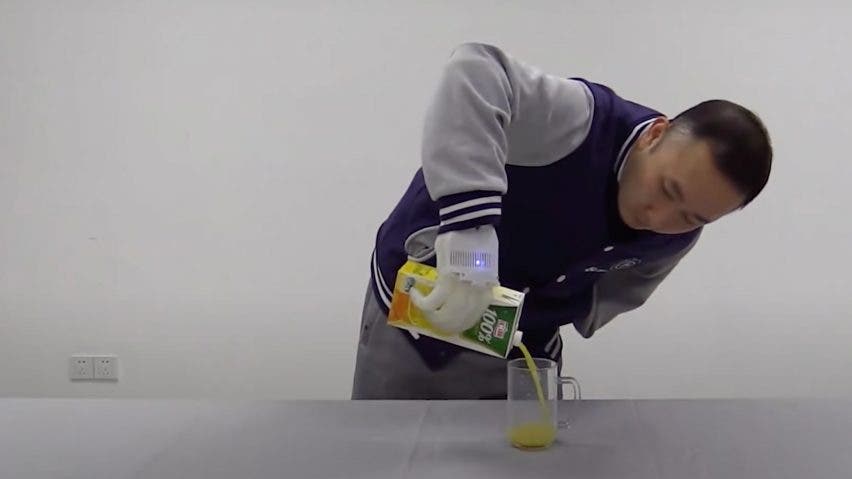
Modern prosthetics can have a wide range of motion and enable users to control them through residual muscle signals to perform desired motions by thought alone. Once in the realm of science fiction, these bionic limbs show that the future is already here — for those who can afford it.
In an effort to make a limb prosthetic that is both highly functional and accessible, researchers at MIT and Shanghai Jiao Tong University have devised an inflatable neuroprosthetic hand that allows users to perform highly complex motions such as pouring juice from a container or zipping a suitcase. While similar neuroprosthetics cost upwards of $100,000, this inflatable hand can be made as cheap as $500.
“This is not a product yet, but the performance is already similar or superior to existing neuroprosthetics, which we’re excited about,” says Xuanhe Zhao, professor of mechanical engineering and of civil and environmental engineering at MIT. “There’s huge potential to make this soft prosthetic very low cost, for low-income families who have suffered from amputation.”
The squishy prosthetic is made from a soft, stretchy material — an elastomer known as EcoFlex. The soft and elastic properties allow the prosthetic to be both lightweight at just half a pound (225 grams) and very durable, with tests showing it can recover its original shape after being squashed by a hammer or run over by a car.
Each of the five balloon-like fingers wraps around segments of fiber that act in lieu of articulated bones. These digits are connected to a “palm” that was 3-D printed in the shape of an actual human hand. Rather than using complicated and heavy electric motors, the fingers are articulated using a pneumatic system consisting of a small pump and many valves that has to be worn around the waist.

Users can form four main types of grasps: pinching two and three fingers together, making a balled-up fist, and cupping the palm. The prosthetic user can employ a combination of these four basic movements to perform various hand motions useful in day-to-day life. The grasping actions are aided by a tactile feedback system, which includes pressure sensors on each fingertip, so the user can gain a sense of the pressure they exert on an object and adjust accordingly.

The movements themselves are controlled by muscle signals that are translated by computer algorithms into instructions that the prosthetic’s controller can understand.
The inflatable hand has only been trialed on two volunteers with upper-limb amputations so far. Each participant first underwent a brief 15-minute electromyography (EMG) training session, using sensors that record electrical signals from the residual limb. This way, when the user imagines clenching the hand into a fist, the prosthetic responds accordingly.
Despite the small sample of volunteers, the prosthetic performed wonderfully. The participants used the inflatable hand to write with a pen, turn pages of a book, eat foods like crackers and cake, and lift objects of various weights. When compared to commercially available bionic hands, the inflatable hand performed on par or better.
The researchers have filed for a patent of the design and hope to introduce the product to the market soon. There are over five million people across the world who have undergone an upper-limb amputation, and such a cheap but functional prosthetic could dramatically improve their quality of life.
In the meantime, Zhao and colleagues plan on tweaking and improving the design so it is fit for mass production. In time, this sort of remarkable technology could become the norm. For instance, philanthropist and entrepreneur Tej Kohli’s ‘Future Bionics’ program highlights just how assistive technology can substantially improve the quality of life for people living with disabilities.
“We now have four grasp types. There can be more,” Zhao says. “This design can be improved, with better decoding technology, higher-density myoelectric arrays, and a more compact pump that could be worn on the wrist. We also want to customize the design for mass production, so we can translate soft robotic technology to benefit society.”
The inflatable bionic hand was described in a recent study published in the journal Nature Biomedical Engineering.


